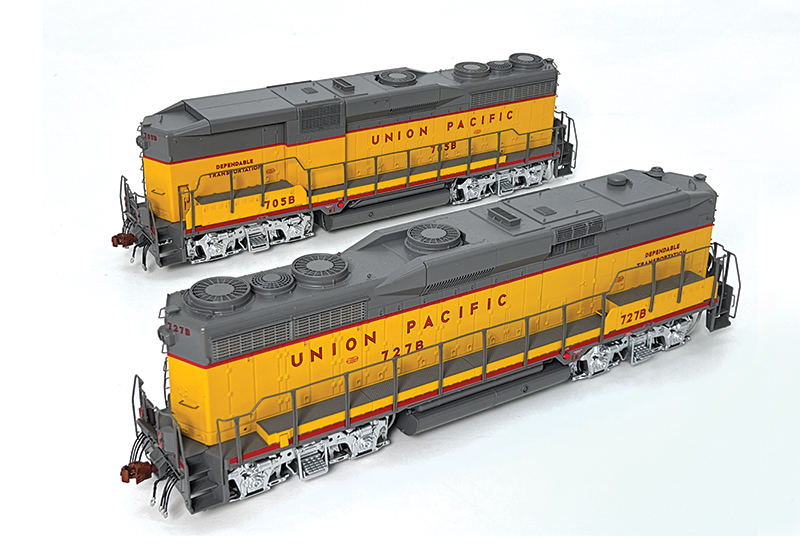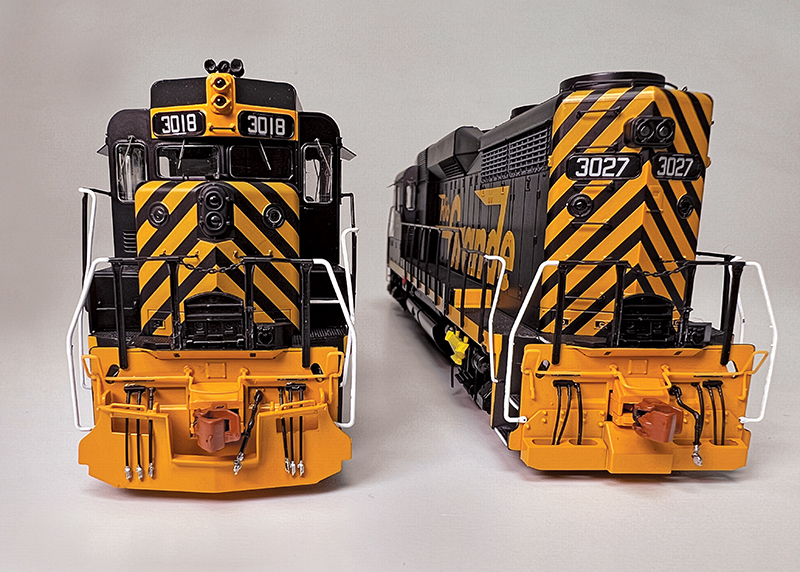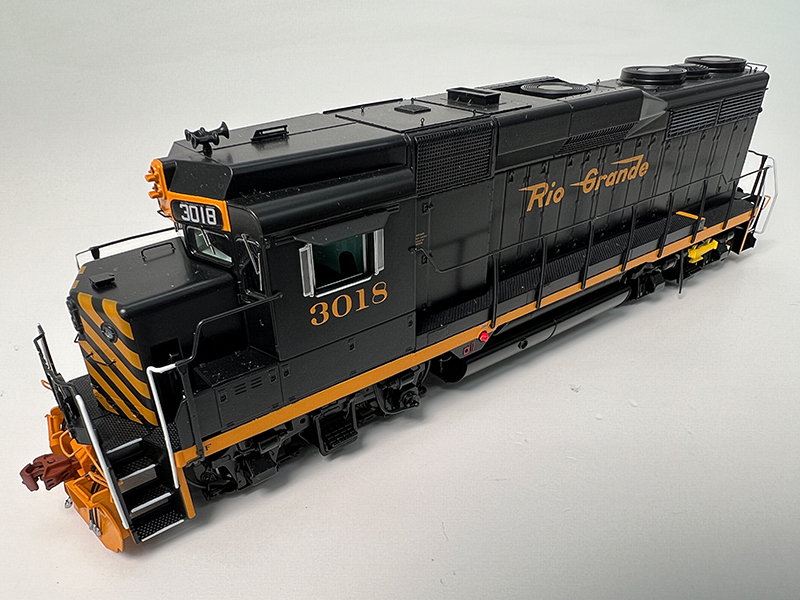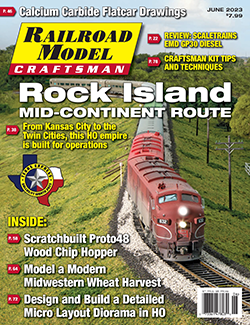 Review by Harry K. Wong/photos by the author
Review by Harry K. Wong/photos by the author
By the end of the 1950s, the task of “dieselization” — converting motive power fleets from steam to diesel-electric — was essentially complete on most railroads across the United States. With smaller diesel manufacturers like Baldwin, Lima, and Fairbanks-Morse vanquished from the marketplace, Electro-Motive Division (EMD) of General Motors stood dominant against the American Locomotive Company (Alco), which languished behind in a distant second place. However, a new challenger was about to emerge. After years of partnering with Alco, building small diesel switchers of their own, and quietly fielding “export” road locomotives for testing abroad through the 1950s, General Electric formally declared its entry into the domestic market with its 2,500hp U25B in 1960.
Prior to the introduction of GE’s U25B, EMD sought to develop the next iteration of their four-axle “GP” series that would succeed its then-current GP20 model. Initially known as the “GP22” based on its horsepower rating, the name was quickly changed to the higher-numbered “GP30” for marketing purposes against GE’s U25B. From a mechanical perspective, the new locomotive featured a pressurized engine compartment, and a modest 250hp increase over its 2,000hp predecessor, yet stood 250hp shy of the U25B and Alco’s RS-27 road switcher.
However, the GP30 is best known for its uniquely formed roofline, never repeated on any EMD locomotive since. An improved electrical system dictated a much taller electrical cabinet, which in turn created a unique design opportunity for GM’s automotive stylists who created its unmistakable profile.

ABOVE: EMD produced 40 cabless GP30 B-units. The Union Pacific versions (705B and 727B) are seen here.
Between July 1961 and November 1963, a total of 946 GP30s, including 40 cabless B-units, were produced at EMD’s plant in LaGrange, Ill. Across the border, Canadian counterpart General Motors Diesel Division (GMDD) in London, Ont., constructed just a single pair of GP30s for Canadian Pacific. With few exceptions, nearly every large American railroad of the time added GP30s to their rosters. Union Pacific employed the largest fleet with 151 units split between conventional and cabless variants.
With much anticipation from the modeling community, ScaleTrains has recently delivered its first production of HO Scale EMD GP30s as part of its premium Rivet Counter product line. As with every Rivet Counter model, each model is detailed and lettered specifically not just to a particular road name, but for each road number as it appeared during a specific time period. These nuances are described in lengthy detail on their website.

ABOVE: The front and rear of the Scale Trains Rio Grande GP30.
Numerous design refinements were incorporated during the prototype’s 29-month production run. These refinements are sometimes categorized into “production phases” by diesel spotters. Some changes are major, such as the length of the cab on the fireman’s side between Phase Ib1 and Phase Ib2 GP30s. Other changes are much more subtle, such as the style of heater vent and shape of the sand filler hatches. For this inaugural release of Rivet Counter GP30s from ScaleTrains, three different sub-phases of Phase I GP30s and GP30Bs in both standard and high-nose versions are offered, along with a group of cabless Phase IIa GP30Bs, and lastly, a “RDMT” (“road mate”) slug converted from a GP30 carbody for CSX…




